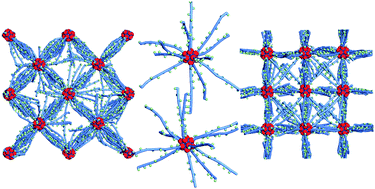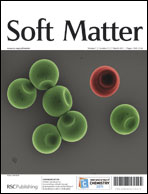Stability of DNA-linked nanoparticle crystals I: Effect of linker sequence and length
Abstract
The creation of three-dimensional, crystalline-ordered  and the number of spacer bases s on the stability of crystal states. We also consider the effect of using a single linking NP type versus a binary linking system. We explicitly compute the free energy, entropy, and melting point TM for BCC and FCC lattices. We show that binary systems are preferable for generating BCC lattices, while a single NP type generates the most stable FCC crystals. We propose a simple model for short DNA strands that can account for TM of all our data. The model also indicates that the heat of fusion between crystal and amorphous phases grows linearly with
and the number of spacer bases s on the stability of crystal states. We also consider the effect of using a single linking NP type versus a binary linking system. We explicitly compute the free energy, entropy, and melting point TM for BCC and FCC lattices. We show that binary systems are preferable for generating BCC lattices, while a single NP type generates the most stable FCC crystals. We propose a simple model for short DNA strands that can account for TM of all our data. The model also indicates that the heat of fusion between crystal and amorphous phases grows linearly with  , providing a route to maximize the relative crystal stability.
, providing a route to maximize the relative crystal stability.


 Please wait while we load your content...
Please wait while we load your content...